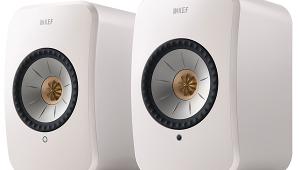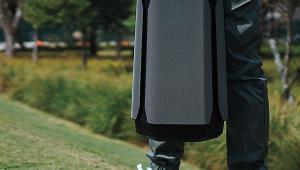Review: Sonos Play:3 Page 2
A zillion tunes at your fingertips
Here’s an obligatory, boring list of all the services currently available on Sonos: AUPEO, iheartradio, Last.fm, MOG, Napster, Pandora, Rdio, Rhapsody, SiriusXM Internet Radio, Spotify, Stitcher SmartRadio, TuneIn Radio and Wolfgang’s Vault. You can also get thousands of Internet radio stations through Sonos’ own menu. And, of course, you can access the digital music files you already have, in a wide range of formats including MP3, WMA, AAC, FLAC, OggVorbis and WAV.
Rather than try to tell you every last thing the Play:3 can do, I’ll just relate one anecdote: My friend Terry came over for a late-night music-listening and cigar-smoking session. It took him no more time to warm to the Sonos interface than it did for him to clip and light his La Gloria Cubana Artesanos Retro Especiale. After flipping through some of the options on my phone, he settled on the Mellow Jazz channel from JazzRadio.com. A few minutes later, a burnin’ cut featuring guitar and Hammond organ came on.
“Who’s that?” I wondered out loud. “Sounds like Jimmy and Wes,” Terry replied, referring to organist Jimmy Smith and guitarist Wes Montgomery. But I own both albums Jimmy and Wes recorded together, and knew this wasn’t on either. “Sounds like a couple of guys trying to sound like Jimmy and Wes,” I suggested. “And doing a damned good job of it,” Terry said.
So I checked my phone to find that the tune was by a guitarist named Jake Langley. After it was over, I flipped over to Spotify, and in seconds we were digging Langley’s album Doug’s Garage. In less time that it took for our cigars to burn an inch, we’d discovered an artist we’d never heard of and dug deep into his work.
The sound of Sonos
When you’re packing a few small drivers into an already-cramped box measuring 5.2 x 10.6 x 6.3 inches, you have to make compromises. For the most part, I think Sonos’ engineers made the right ones.
I did most of my listening with a single unit placed horizontally, which is the way I think most people will use the Play:3. In this position, the sound is unusually satisfying for a product in this size and price range. It’s a big, room-filling sound, with ample bass and a nice—although obviously modest—sense of ambience. Voices sound pretty smooth, with just a little trace of edginess in the upper midrange and an occasional touch of sibilance. The treble is a little on the mellow side, but it’s definitely there; the dense, high-pitched, tinkly percussion on Holly Cole’s “Train Song” (from Temptation) rang out clearly and even gave me some stereo effect despite the close spacing of the midrange drivers.
The bass has a “high-Q” sound, meaning that it has a noticeable resonant peak, but you probably couldn’t get decent bass out of this little box if it didn’t have that. With most music, this effect just made the bass fatter and a little softer, but still quite grooving and satisfying. The bass tuning bothered me only on one recording, jazz guitarist Julian Lage’s Gladwell, which features an acoustic bass sound that’s already a bit on the thuddy side; through the Play:3, it just sounded even thuddier.
I enjoyed cranking the Play:3 all the way up with rock music; Sonos cleverly designed it so that it doesn’t play loud enough to trash the driver or even to distort to a noticeable degree. The clanging percussion that opens Devo’s “Freedom of Choice” (from the album of the same name) sounded dynamic, powerful and obnoxious, just as it’s supposed to. “Highway Star,” from Deep Purple’s Made In Japan, had all the simplistic-yet-slamming groove and raw power I crave from this tune.
What’s most impressive is what the Play:3 doesn’t have. There’s no ersatz stereo expansion or phony surround effects to mess up the sound. You won’t hear the vibration of a flimsy plastic cabinet as you do with many iPod docks. You won’t hear the nearly absent treble that many small systems suffer because they lack tweeters. And you won’t hear the annoying “cupped hands” coloration (sounding as if singers had their hands cupped around their mouths) that mars the sound of many products in this general category.
The stereo sound feature may be nice if you want to add onto your Play:3 at a later date, but it didn’t thrill me the way a single Play:3 did. I compared it to a little stereo system I threw together comprising Hsu Research HB-1 Mk2 speakers and a Topping TP30 amplifier, a rig that would cost around $450 in total, and fed it sound from the same laptop the Play:3s were drawing from. In this setup, the Play:3s’ tweeters sounded overly crisp, and the Sonos system lacked the punchy bass, airy treble and strong stereo imaging that the Hsus delivered easily.
If you want to do stereo, I’d strongly recommend getting Sonos’ $499 ZonePlayer 120, which works the same way as the Play:3 but incorporates a 55-watt-per-channel stereo amp that you connect to the speakers of your choice. The ZonePlayer 120, combined with a good-quality speaker selling for $200 to $300 per pair, would give you a great-sounding little system for just $100 to $200 more than a pair of Play:3s, with the same zillions-of-tunes-at-your-fingertips power.
- Log in or register to post comments


























































